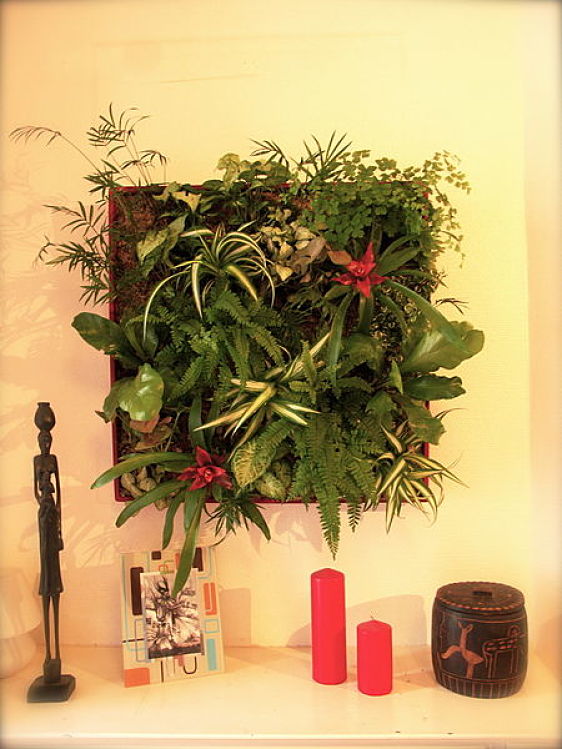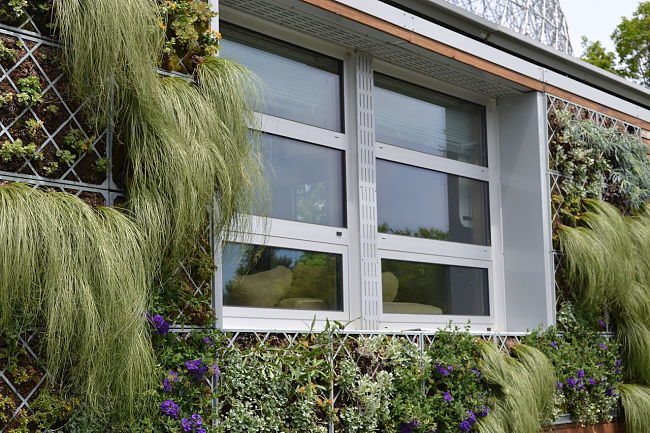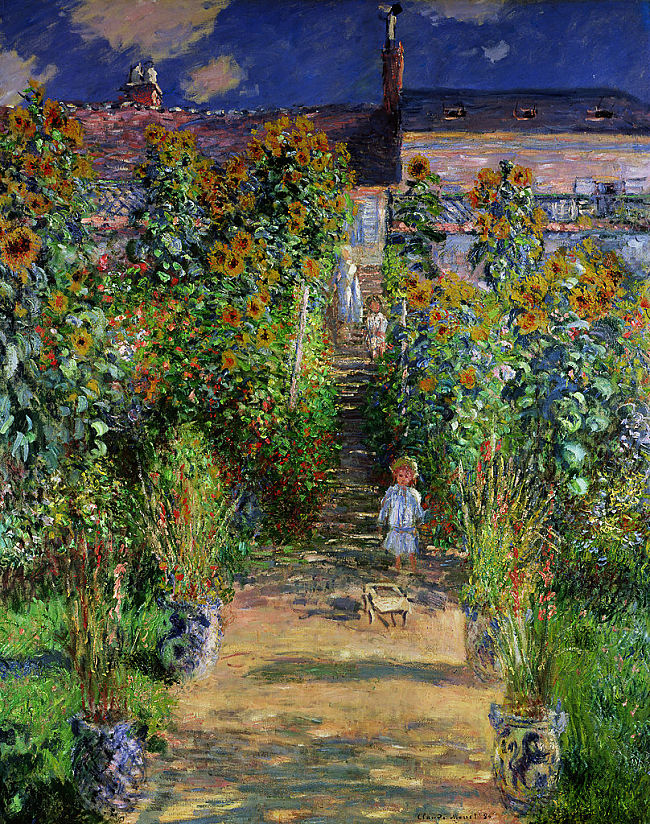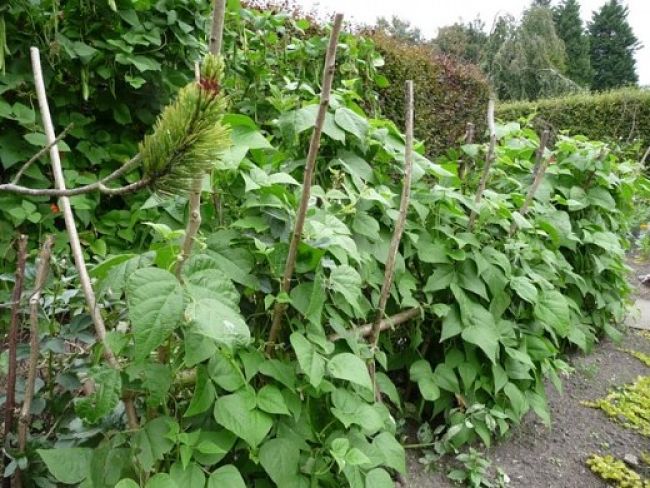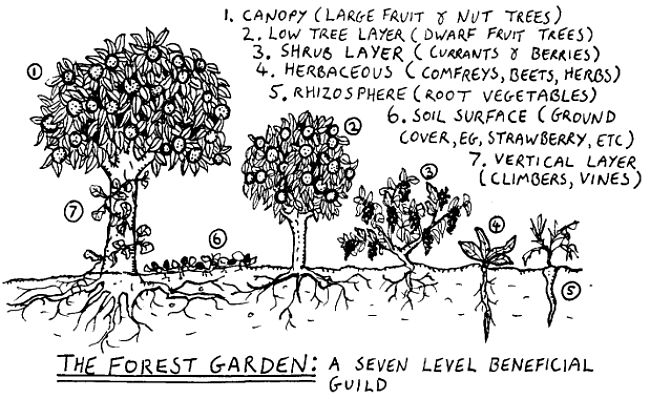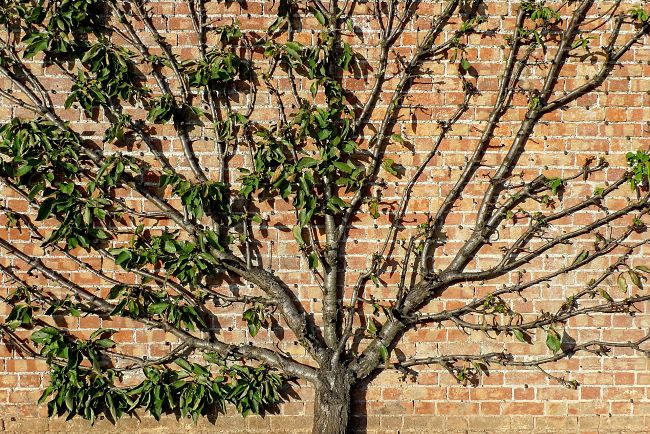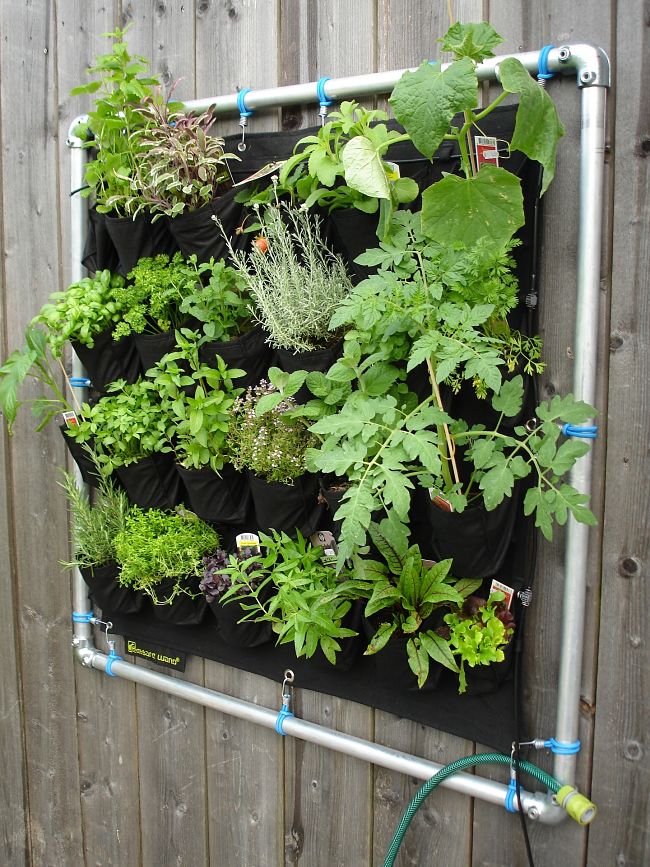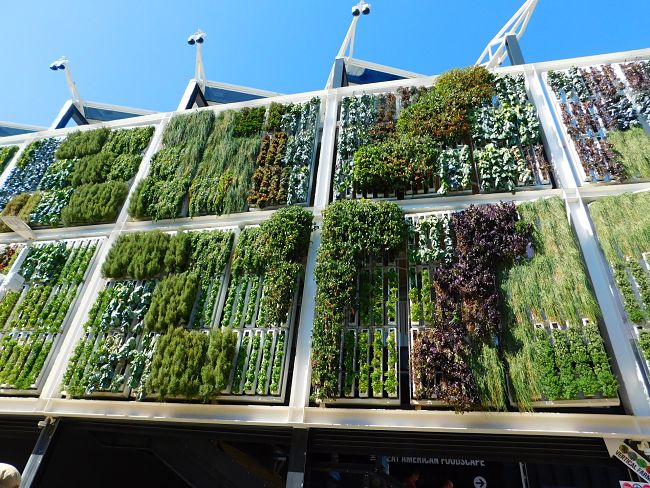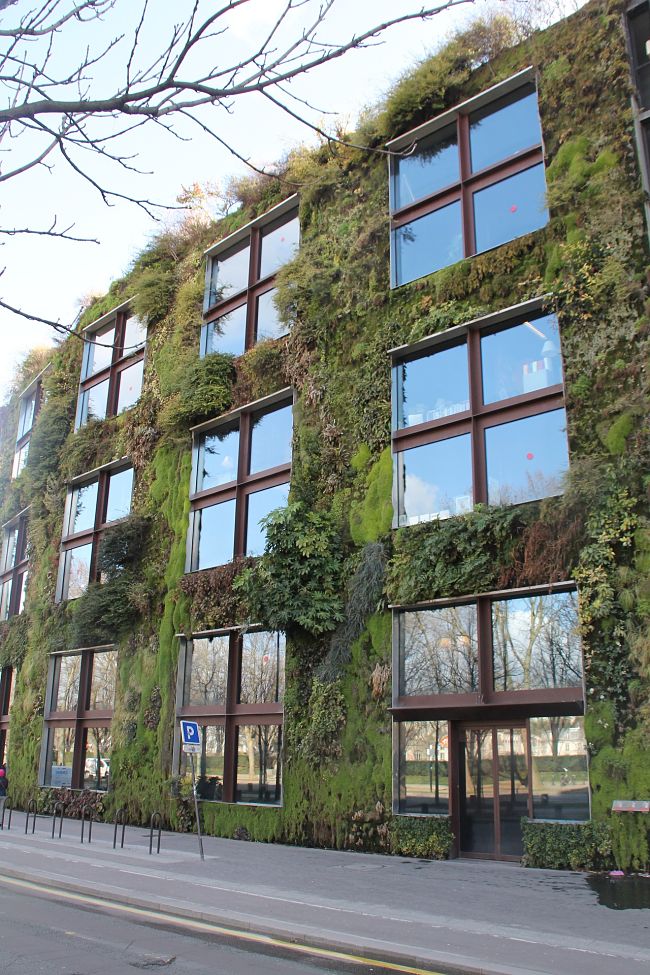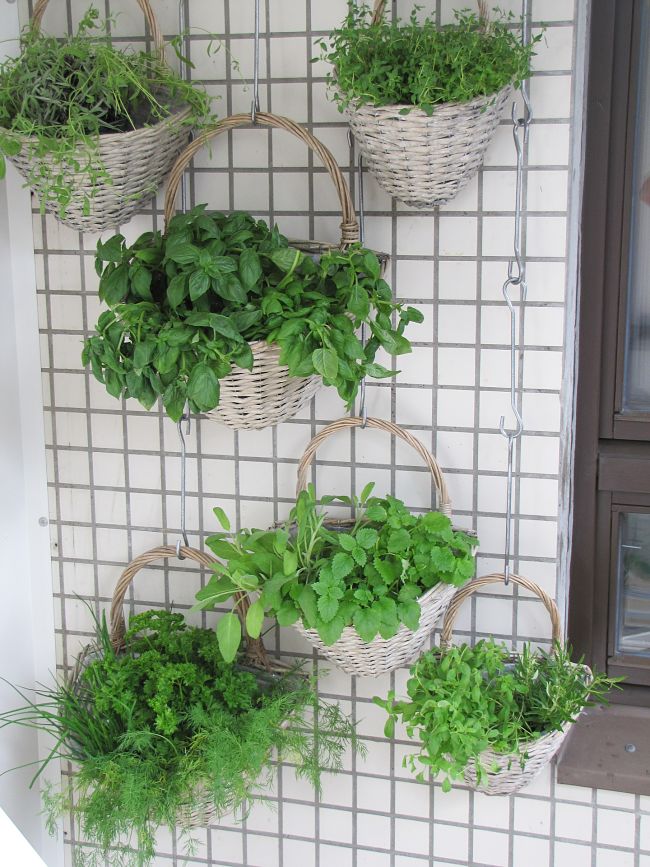Growing Vegetables in Vertical Gardens, Hanging Pots and Baskets
Vertical gardening is a way of maximizing the yield from a small garden plot, an urban garden, or from vertical layers planted in containers.
Permaculture maximizes yield by having complex gardens with layers at various heights, trees, shrubs, bushes, herbs and ground covers. You can achieve similar results with vertical gardens in pots or in tiny garden plots.
Vertical gardens make use of height above a small footprint, by having the vegetation hang down from pots and containers, or grow up vertically using stakes as supports or growing up walls and barriers.
While vertical gardens are mostly used for flowers, vegetables of various types can also be grown vertically to provide home gardeners with fresh produce.
This article discusses how to set up vertical gardens, what plants are suitable and provides tips to make vertical vegetable gardens a success.
Discover when is the best time to grow vegetables and herbs in your climate zone.
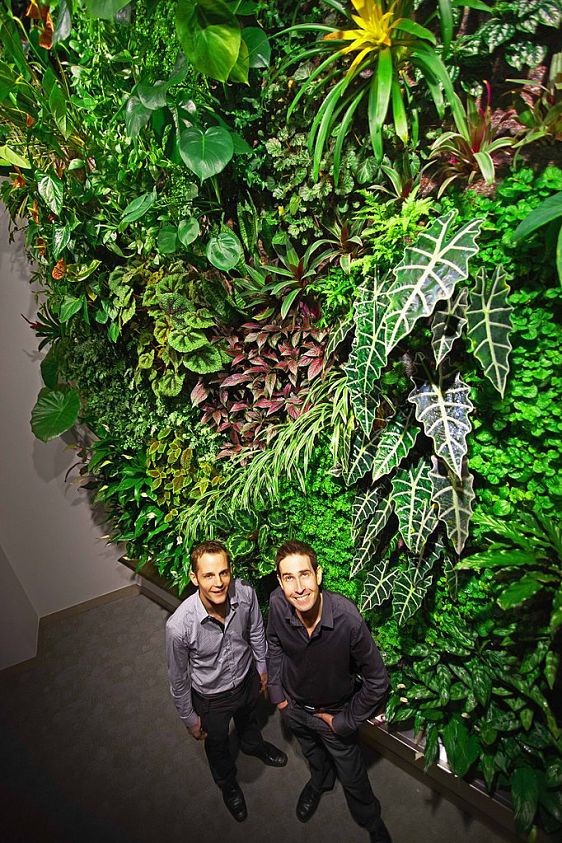
What are the Major Benefits of Vertical Gardening?
► Plants growing upwards or hanging down require small parcels of soil.
► Less prone to weeds as the small amount of soil can be easily weeded
► More efficient use of fertilisers and water
► Lesser time and work required to set up and maintain gardens
► Easier to prune and harvest
► Less maintenance required
► Easier pest control
How to Set Up Vertical Vegetables Gardens
There are two broad types:
- Plantings that use stakes and structures such as walls, arches and pergolas
- Plantings in pots, baskets and other containers where the foliage hangs down
Sites for Vertical Vegetable Gardens and Set Up
Most vegetables need at least 6 hours of the sunlight during the day and protection from harsh winds. Plants also need good soil, adequate water and humidity. Frost is also a consideration.
The vertical structure and the suspension mechanism for the containers must be strong enough to bear the weight of the fully grown plants. Understanding the basics of growing vegetables vertical is mandatory. Almost any vegetable can be grown vertically given an adequately deep container and a vertical support that is strong enough to hold the plant with its fruit.
Evaluate the conditions of your garden to choose vegetables that will thrive based on sunlight, wind, humidity and heat. Prepare to water vertical vegetables daily. Select “vine” varieties of plants when applicable.
The soil needs to be very fertile because you will be asking it to sustain a larger amount of vegetation than what it would otherwise do. It will require more frequent watering and good coverings of mulch and compost to keep the plants growing constantly. The plants need to grow more vigorously than that required when growing horizontally.
Structures for Upwardly Growing Plants in Vertical Gardens
There are a huge variety of vertical structures that can be used. The most common are walls and fences (solid or wire mesh). Other added structures that can be used are:
► arbors
► arches
► bamboo poles
► border fences
► disused swings, trampolines, kids playground equipment
► frames
► free-standing and supported wire mesh cylinders
► gazebos
► ladders
► large living trees, or dead ones
► Poles and stakes
► pyramids
► tree branches
► trellises
► tripods
Matching the Vegetable Species to the Type of Structure and Support
Obviously some plants are more suited to various structures than others. For example, tomatoes growth best on stakes and structure with depth (a 3rd dimension) rather than against a flat wall. Climbing beans are ideally suited for spreading over flat surfaces such as walls and fences. Pumpkins, squash and canelope can get very heavy and need a broad support rather than a stake.
Growing Vegetables Hanging Down from Containers
Containers can be used for growing plants upwards using stakes and frames, but this is the same as planting in a small plot of soil (see above). In this case we are referring to hanging containers and making use of the space below in which the plant can grow and product the vegetables for harvest.
Various containers are suitable including:
► urns
► pot hangers
► cascaded pots
► window boxes
► suspended clay pots
► wooden crates and frames
► hanging baskets or hay baskets,
► special pots with slits for growing strawberries
The main requirements for a suitable container are:
► It should match the requirements of the vegetable plant
► It should be deep and sturdy enough to support the type of vegetable you are growing.
► The support need to be strong enough to support the fully grown plant
► Ease of watering and drainage are important and the containers need to be watered very frequently
Types of Vegetables To Grow in Vertical Gardens
► Pole, climbing and running Beans: These beans will climb almost any structure and provide their own support. They also can hang down from containers by letting them spill over the sides.
► Peas: Like climbing beans, peas will climb and attach to virtually all structures and they provide their own support. They are especially suited to arches and arbors on which they can spread. They also hang down from baskets and suspended pots.
► Tomatoes: Tomatoes are very heavy and they need strong supports suck as stakes. They also need to be securely fastened to those supports. Some types are more suited to vertical types than others. Less suitable for growing in hanging containers.
► Winter squash, melons and pumpkins: These plants have long spreading vines that can grow vertically if well supported as the fruits are very heavy. Trellises and frames covered in wire mesh work best because they provide better support.
► Cucumbers: The vine varieties of cucumbers resemble squash in their requirements. However they are smaller and more akin to climbing. They can provide some of their own support if they are encouraged to entwine entwine themselves around the vertical structure, but extra ties are needed.
► Runner strawberries: These grow will in hanging baskets and the special pots with slits in their sides.
► Most other climbing or vine type vegetable plants are suitable
Related Articles for Gardening Methods
=> Allergy Free Garden Design and Tips for Low Allergen Gardening
=> Bee Friendly Garden Designs to Attract and Help Bees
=> 10 Magical Powers of Mulch for Organic and General Gardening
=> How to Turn Lawn into Vegetable Garden, Flower Beds or Wildlife Haven
=> Urban Container Gardening: High and Low Tech Designs and Smart Ideas
